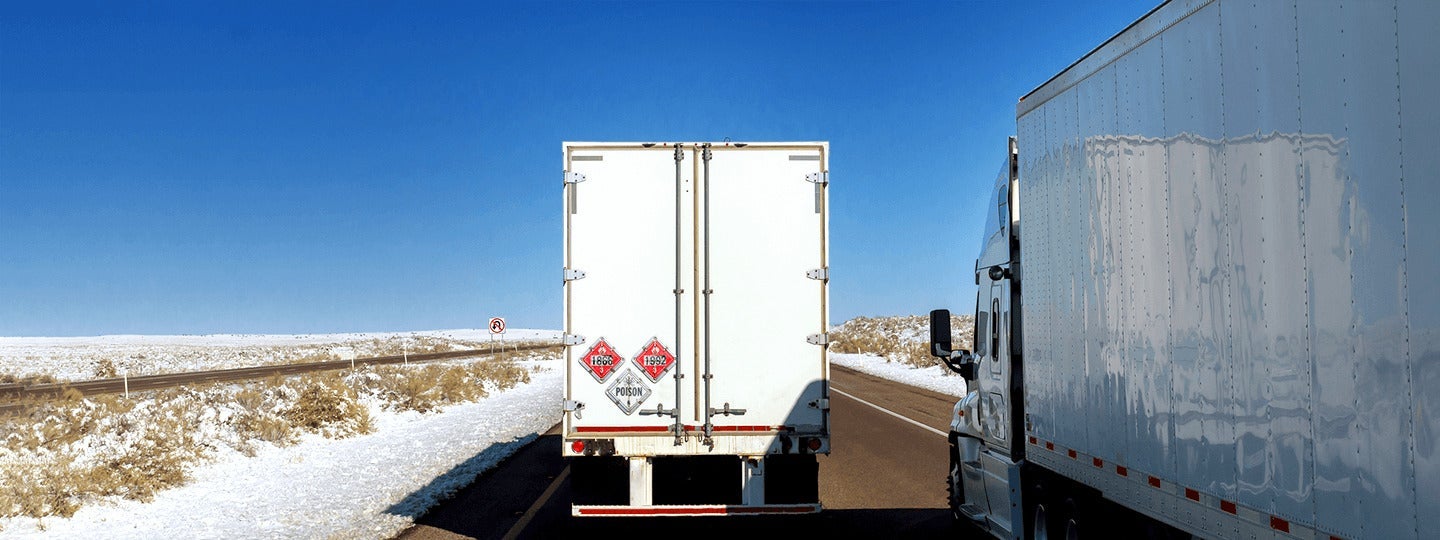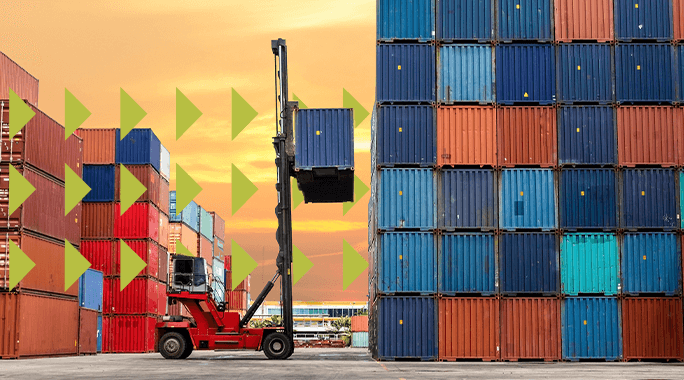BLOG POST
How To Correctly Fill Out a Hazmat Bill of Lading

Reading Time: 5 minutes
Shipping hazardous materials, or "hazmat shipping" as it's commonly known, requires keen attention to detail - and a bit of detective work. The name alone tells you how important it is. Packaging it correctly, handling it with care, being exact with quantities and getting the right classification for shipping it using less-than-truckload (LTL) services - all of this is critical to safely transporting hazardous freight shipments.
Hazmat Shipping Papers
You'll need two important documents to prepare your shipment for safe delivery: the bill of lading (BOL) and the product's Safety Data Sheet (SDS).
1. Bill of lading
The BOL is the connecting piece to getting your shipment delivered. When filled out correctly, this hazmat shipping paper acts as a contract between you and the freight carrier to help ensure a safe and timely delivery of your goods, avoiding one of the common freight delays: document errors.
2. Safety data sheet
The SDS is a document completed by the manufacturer of the hazardous material. It's a great resource when completing the hazmat BOL requirements . Your carrier or 3PL provider may ask for a copy to have on hand while transporting the product. This is because SDS documents contain information on the product, including:
- Chemical properties
- Physical and environmental health hazards
- Safety precautions for handling, storing and transporting the materials
- First aid and fire-fighting measures
- Recommendations for appropriately responding to accidental spills, leaks or releases
- Proper disposal
Use a TMS to help ensure safe delivery when transporting hazardous materials
When you use SpeedShip®, our proprietary transportation management system (TMS), and indicate you're shipping a hazardous material, you'll be required to enter the information carriers need to transport your shipment. You can't book a hazmat shipment with any fields left blank or incomplete.
Here's another big benefit that will give you peace of mind: When you ship with Worldwide Express, documents for any shipment are kept in SpeedShip indefinitely. You can easily go back into a shipment's history and verify entered information or reprint documents at any time. That takes care of the requirement to retain hazmat shipping documents for two years.*
How To Fill Out and Meet the Hazmat BOL Requirements
You should use a standard BOL and complete the shipper and consignee information as you normally would for any shipment. On a paper BOL, mark the section labeled "Hazmat" or "H.M.," with a red X so it stands out. If you're creating a BOL electronically using a TMS, the box will be selected for you. Complete each field with the specific information about your hazmat shipment:
- UN number. The four-digit number identifies the product's substance. You'll find it in the SDS.
- Proper shipping name. This is specific to the product and must exactly match what is shown in the SDS.
- Packaging group number. This number identifies the severity of danger when shipping hazardous materials. The packing group number can change for a commodity based on the quantity being shipped. For instance, a shipment of a smaller quantity with a packing group of III could jump to a packing group I if the quantity is increased. If you enter the wrong packing group number, the carrier could charge you a reclassification fee.
| Packing group | Degree of danger |
| I | Great |
| II | Medium |
| III | Minor |
- Hazmat class. The U.S. Department of Transportation (DOT) categorizes hazmat products in nine classes:
| Class 1 | Explosives |
| Class 2 | Gases |
| Class 3 | Flammable liquid |
| Class 4 | Flammable solids |
| Class 5 | Oxidizing substances and peroxides |
| Class 6 | Poisonous (toxic) and infectious substances |
| Class 7 | Radioactive Material |
| Class 8 | Corrosives |
| Class 9 | Miscellaneous dangerous goods |
Subsidiary Hazmat Classes
Within these primary classes are subcategories. You'll enter the full hazmat class on the BOL. A great resource for identifying class numbers is ADR Book. The site gives other information you'll find useful, such as the type of label to apply to the container or the placard the driver puts on the truck, loading and unloading instructions, the kind of vehicle used to transport the product, and so on.
- Type of handling unit. You'll know this field from standard shipments, but it's especially important for hazardous products. Some classes require specific packaging and packing methods for safety measures. You can find packing details with the ADR Book website.
- Quantity of handling units. Carriers use this field to determine if the maximum limited quantity for the product is met or exceeded. ADR Book will show you the minimum and maximum limited quantity. Shipping products that exceed this amount is not allowed for safety precautions. You'll need to break up your shipments to stay below the product's maximum limited quantity. If you're shipping less than the minimum amount, you don't need to identify it as a hazmat shipment (which can save you money).
- 24-hour emergency contact. You're required to identify the emergency response company you've contracted to stand in as your emergency contact for the shipment. No hazmat shipment can be moved without it. Companies like Chemtrec and Infotrac are professionally trained in DOT requirements to safely clean up after spillage or leakage and dispose of hazardous waste.
Common reasons for a rejected hazmat shipment
Handing over a correct BOL is important for all shipments, but your stakes are especially high when shipping hazmat products. If your BOL is incomplete or inaccurate, you could find yourself with an abandoned load at your dock or the freight carrier's distribution center. You'll be left scrambling to find a different carrier willing to retrieve and deliver it. Be careful not to misrepresent your shipment when completing the hazardous material bill of lading . The following products are commonly problematic:
- Electronics with lithium batteries included. Sports massage guns and cell phones are recent examples of misidentified hazmat products.
- Poisonous shipments, identified by class code 6 or with a subclass 6 shown in parentheses. Few freight carriers transport poisonous goods and will refuse the shipment if the BOL is incorrect and later identified as a class 6 hazmat shipment.
- Common products that don't seem like hazmat products but include chemicals which make them hazardous, such as some perfumes and dish soap.
Shipping hazmat is complex as you can see. Get the complete breakdown and see how to avoid rejected freight.
Questions To Ask Carriers or 3PLs When Vetting for Hazardous Shipping
Our TMS identifies freight carriers who are professionally trained and have obtained a license to ship hazmat products. But if you choose to line up carriers on your own or use a different 3PL, you should ask these questions:
- Are your drivers and handlers trained in shipping hazardous materials?
- Do you ship poisonous chemicals?
- Do you have the proper placards needed for hazmat shipments?
- Do your drivers inspect the BOL before leaving the shippers' dock to ensure accuracy and ability to move the shipments?
- Do you have the equipment necessary to safely handle loading and unloading hazmat containers?
- Do you use a high-performing TMS?
- Do you have connections with emergency response companies?
For more hazardous shipping guidance, check out our helpful article: "Can I Really Ship That?"
Feel confident transporting and meeting hazmat bill of lading requirements with Worldwide Express.
You can rest assured knowing we'll answer "yes" to all those questions. Worldwide Express has helped move hazmat shipments for more than three decades and we know what's required for safe transport. Plus, we have reliable freight carriers that we've vetted to ensure their professionalism and compliance with training and safety standards. Contact us for a consultation and hear what we can do to turn your challenge into a shipping opportunity.
* "How to Ship Dangerous Goods," Federal Aviation Administration.






